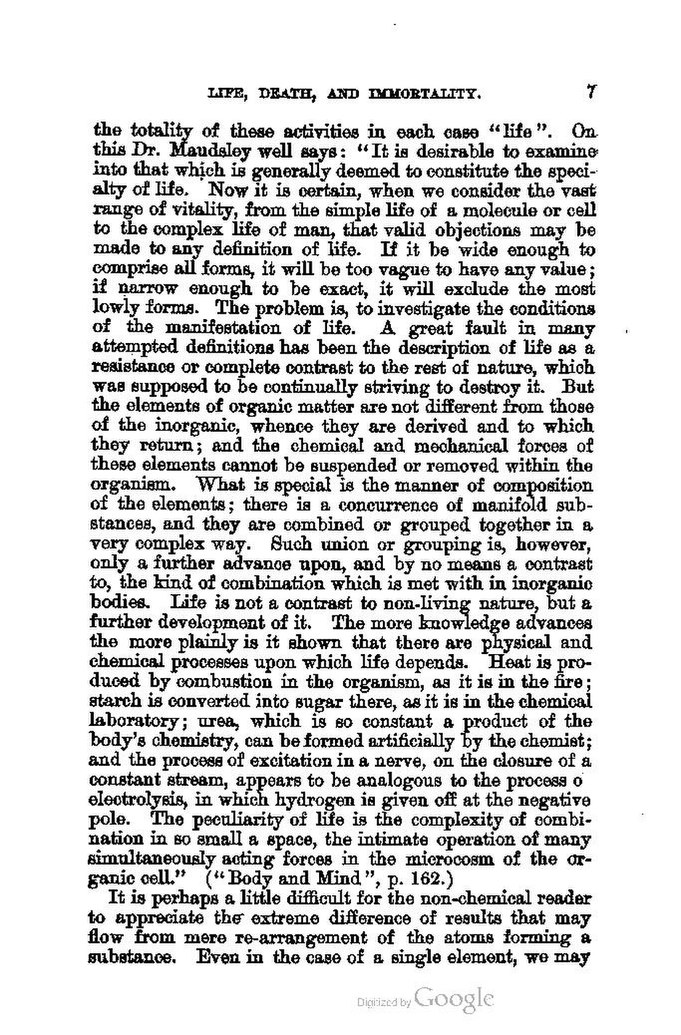the totality of these activities in each case "life". On this Dr. Maudsley well says: "It is desirable to examine into that which is generally deemed to constitute the specialty of life. Now it is certain, when we consider the vast range of vitality, from the simple life of a molecule or cell to the complex life of man, that valid objections may be made to any definition of life. If it be wide enough to comprise all forms, it will be too vague to have any value; if narrow enough to be exact, it will exclude the most lowly forms. The problem is, to investigate the conditions of the manifestation of life. A great fault in many attempted definitions has been the description of life as a resistance or complete contrast to the rest of nature, which was supposed to be continually striving to destroy it. But the elements of organic matter are not different from those of the inorganic, whence they are derived and to which they return; and the chemical and mechanical forces of these elements cannot be suspended or removed within the organism. What is special is the manner of composition of the elements; there is a concurrence of manifold substances, and they are combined or grouped together in a very complex way. Such union or grouping is, however, only a further advance upon, and by no means a contrast to, the kind of combination which is met with in inorganic bodies. Life is not a contrast to non-living nature, but a further development of it. The more knowledge advances the more plainly is it shown that there are physical and chemical processes upon which life depends. Heat is produced by combustion in the organism, as it is in the fire; starch is converted into sugar there, as it is in the chemical laboratory; urea, which is so constant a product of the body's chemistry, can be formed artificially by the chemist; and the process of excitation in a nerve, on the closure of a constant stream, appears to be analogous to the process of electrolysis, in which hydrogen is given off at the negative pole. The peculiarity of life is the complexity of combination in so small a space, the intimate operation of many simultaneously acting forces in the microcosm of the organic cell." ("Body and Mind", p. 162.)
It is perhaps a little difficult for the non-chemical reader to appreciate the extreme difference of results that may flow from mere re-arrangement of the atoms forming a substance. Even in the case of a single element, we may
